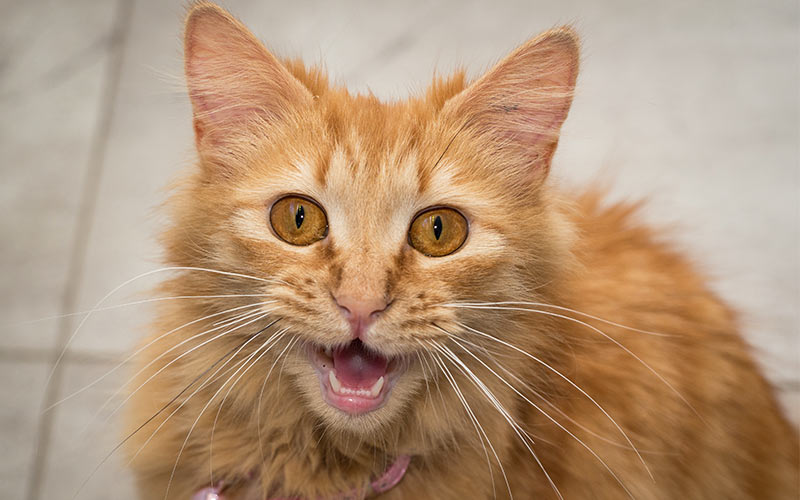

Your cat does this when they are really happy. It's a leftover behavior from nursing, when they massaged their mother's teats to make milk flow. This is sometimes called "making biscuits," because the cat works their paws on a soft surface as if they're kneading bread dough. They're telling everyone that this is their stuff, including you. You'll notice that they also rub the chair, the door, their toys and everything in sight. What they're really doing is marking their territory. When your cat rubs their chin and body against you, they're telling you they love you, right? Well, sort of. Lying on back, growling: Upset and ready to strike.


Back arched, fur flat: Welcoming your touch.Back arched, fur standing up: Frightened or angry.Straight up, quivering: Excited, really happy or, if your cat hasn't been neutered or spayed, they could be getting ready to spray something.Thrashing back and forth: Agitated the faster the tail, the angrier the cat.Held very low or tucked between legs: Insecure or anxious.Erect, fur flat: Alert, inquisitive or happy.Pupils dilated (large): Nervous or submissive (if somewhat dilated), defensively aggressive (if fully dilated), but possibly playful.Pupils constricted: Offensively aggressive, but possibly content.Swiveling: Attentive and listening to every little sound.Backward, sideways, flat ("airplane ears"): Irritable, angry or frightened.Here are some basic (though sometimes contradictory) clues: Ears Pay attention to your cat's eyes, ears, body and tail-they're all telling you something. Do they shrink away under your slightest touch? Save the petting for later they're not interested right now. or they may be contemplating snack time.ĭoes your cat arch their back up to meet your hand when you pet them? This means they're enjoying this contact with you. Chattering, chittering or twittering are the noises your cat makes when they're sitting in the window watching birds or squirrels.If your cat is elderly, they may howl because they're disoriented, especially if suffering from a cognitive disorder, such as dementia. However, in unaltered cats, these sounds are part of mating behavior. Find your cat if they're making this noise. A yowl or howl (they sound like loud, drawn-out meows) tells you your cat is in some kind of distress-stuck in a closet, looking for you or in pain.Growling, hissing or spitting indicates a cat who is annoyed, frightened, angry or aggressive.Sometimes, however, a cat may purr when they're anxious or sick, using their purr to comfort themselves, like a child sucking their thumb. Cats purr whenever they're happy, even while they're eating. Purring is usually a sign of contentment.If you have more than one cat, you'll often hear them converse with each other this way. Aimed at you, it probably means your cat wants you to follow them, usually to their food bowl. Chirps and trills are how a mother cat tells their kittens to follow them.Some people have observed their cats walking around the house meowing to themselves. Meowing is all-purpose your cat may be using "meow" as a greeting, a command, an objection or an announcement.(Any pronounced behavior change should trigger a trip to the vet to make sure your cat isn’t ill or in pain.) Hearing loss can also cause a kitty to vocalize louder than usual because they can’t determine their volume. A cat who feels anxious or confused may meow to seek reassurance. Two possible reasons for this are age-related dementia and deteriorating eyesight. Kittens who are handled often and well socialized may turn into more vocal adults and certain breeds, like Siameses and Abyssinians, are loquacious by nature.Ĭats can also become increasingly vocal as they age. While some cats rarely make a peep, others won’t let you get a word in edgewise. They'll tell you when they're hungry, when they're feeling affectionate and if they're feeling threatened or in pain. You'll learn a lot when you can interpret your cat's wide vocabulary of chirps and meows. In time, you may become so attuned to your kitty’s personality and habits that you’re able to detect subtle changes in their mood and even recognize health problems before physical signs of illness appear. You can better understand your furry friend by paying attention to their vocalizations, body postures and daily routines. Cats lack the facial expressiveness of dogs, they’re generally quieter and their behaviors can be harder to interpret-but this doesn’t mean that the feline mystique is impenetrable.


 0 kommentar(er)
0 kommentar(er)
